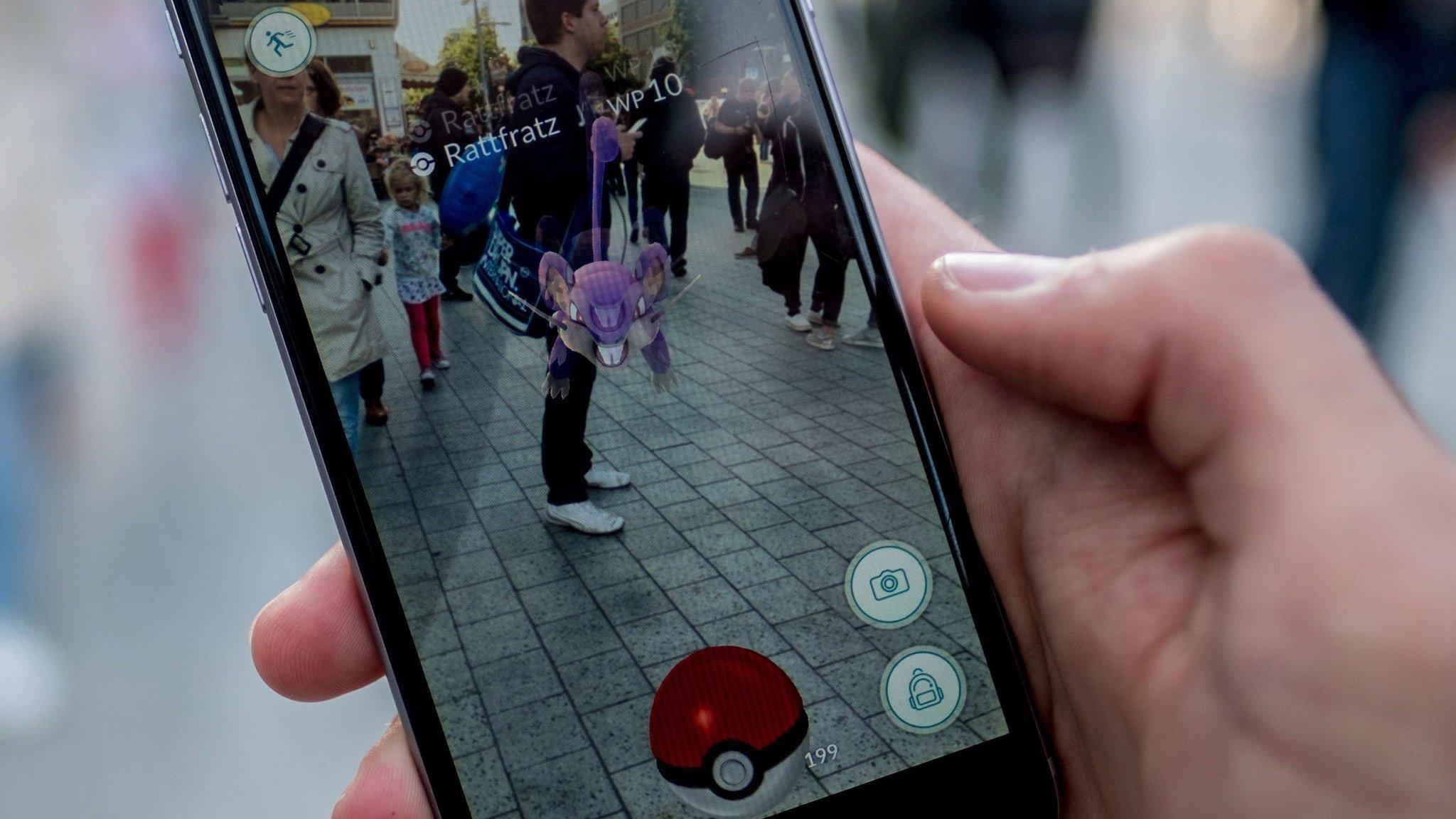Why Pokemon Go may have passed its peak
- Published
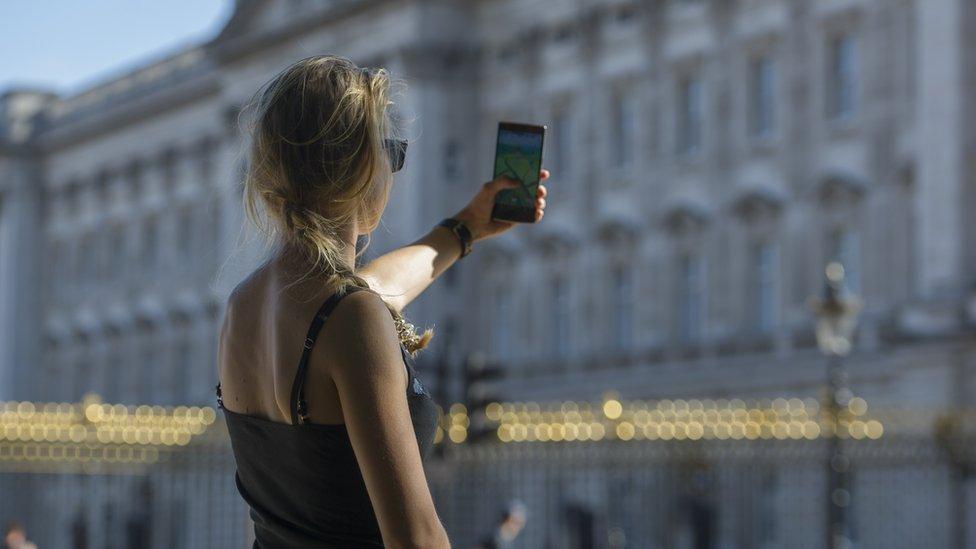
Pokemon Go broke week-one App Store records, according to Apple
It is quite possibly the biggest gaming phenomenon of the smartphone age - but is Pokemon Go's popularity dwindling?
Since the augmented-reality app launched in July, Pokemon Go has swept up gamers in a craze of monster-catching across the world.
Just a week after its release in the US, Apple said the game had broken the App Store record for most downloads in a week. Gamers chasing down the likes of Pikachu and Snorlax have filled public spaces - such as New York's Central Park - with congregations of people wandering about with phones in hand.
But now, a month since Pokemon Go's release, independent analysis suggests its popularity has plummeted.
Some churn was only to be expected - the huge publicity it generated was always going to have attracted players who would briefly try it out and then set it aside.
However, the drop-off occurred during a period when the app was launching across much of Asia and Latin America as well as France.
How many players has Pokemon Go lost?
No official figures on Pokemon Go's downloads have been made public, but according to data compiled by Axiom Capital Management, more than 10 million players have turned away since mid-July.
Pokemon Go's Daily Active Users (DAUs) - an industry metric that determines how many people switch on an app each day - suggested that the game edged close to 45 million users on 17 July. By 16 August, that figure fell to just above 30 million.
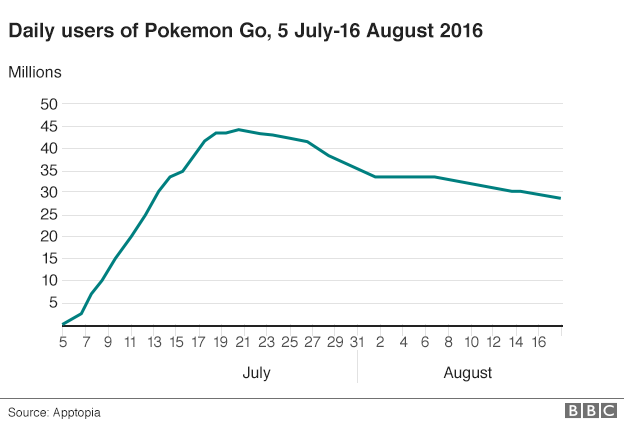
Estimates on Pokemon's daily active users suggest the game's popularity has been in decline since mid-July
This would imply that Pokemon Go has lost more than 10 million daily active users in a month, which equates to nearly a quarter of its DAUs.
Crucially, this is during a phase where Pokemon Go was launching across Brazil, Indonesia, the Philippines and dozens of other countries, meaning that the fall in popularity had significantly offset growth in new territories.
Pokemon Go's downloads, engagement, and time spent on the app per day are all in decline too, according to Axiom's data.
Nevertheless, in Apple's UK App Store charts, Pokemon Go is currently in seventh place in the "free" category, and still in first place on the "top-grossing" chart. The game is similarly popular on Google's Play store.
The BBC's Chris Foxx took to the streets to explore some of the app's highs and lows
What is the effect of the decline?
Nintendo, which owns about a third of The Pokemon Company, has seen its share price fall about 3% in the wake of Axiom's report.
In the context of the volatility of Nintendo's share price in the past month, that 3% drop isn't too drastic. The Kyoto-based firm's valuation surged upon Pokemon Go's release and subsequently plummeted when it warned investors that the game's popularity wouldn't make a significant change to its revenues.
Axiom senior analyst Victor Anthony said the decline should curb concerns that Pokemon Go would weaken the usage of other popular smartphone apps such as Instagram, Snapchat, and Twitter. In July, independent analysis of Android app usage showed that Pokemon Go had overtaken Twitter in the US.
"The declining trends should assuage investor concerns about the impact of Pokemon Go on time spent on [other apps]," Mr Anthony wrote, external.
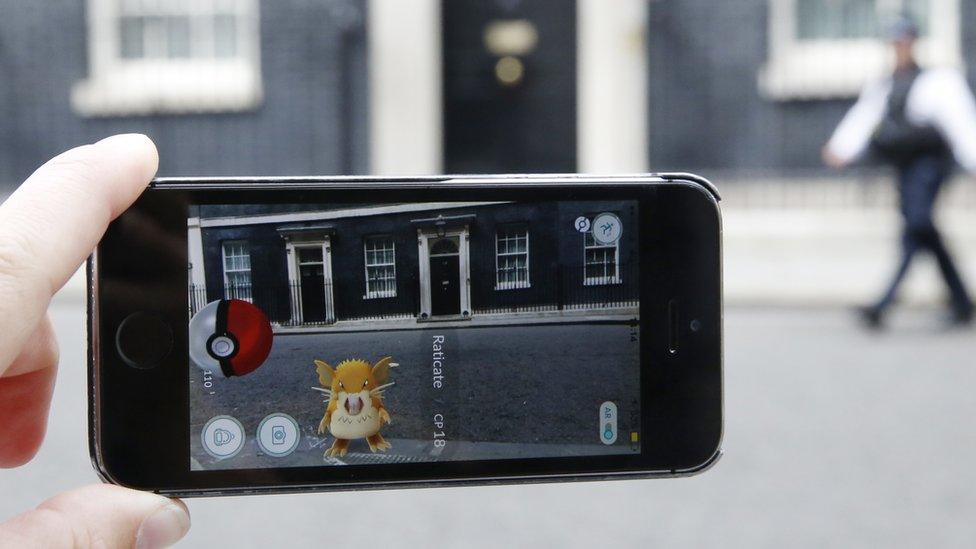
Many Pokemon Go players complained when developer Niantic removed some of the game's tracking features
Was the drop-off inevitable?
Considering the finite capacity of Android and iOS owners, as well as the extraordinary speed with which Pokemon Go caught on, a decline in popularity of some kind was almost inevitable.
"It's rare for games to explode in popularity like Pokemon Go has, but a drop in users was always expected after a big launch," said Craig Chapple, editor of mobile games trade publication PocketGamer.Biz.
He told the BBC: "Players do typically churn from these free-to-play games. Another recent launch, Supercell's Clash Royale, is also being hit by a decline in active and paying users, but it's still making millions of dollars every day."
However, the sheer speed with which Pokemon Go appears to be losing players should raise concerns, Mr Chapple said.
"The numbers, if accurate, do raise some questions about long-term retention in Pokemon Go - whether or not players are finding enough variety and fun in the core experience right now to stick with it."
He added: "But it's important to note it continues to be a top-grossing game in most countries, so players are still spending and enjoying it."
Could Niantic have done more to prevent it?
It's difficult to say whether Pokemon Go's decline would have been so steep had its developer Niantic not removed a core feature from the game.
At the start of August, ardent players aired their grievances at Niantic after the developer reduced the functionality of the game's "nearby" feature. Before the game's update, players were able to look at a list of Pokemon creatures and estimate how close they were.
At the same time, Niantic also cracked down on third-party websites such as Pokevision that let players see where the creatures were located.
Axiom's data suggests the decline in Pokemon Go's popularity commenced mid-July - more than a week before the controversial removal of the nearby feature - but retention rates fell sharply following the update.
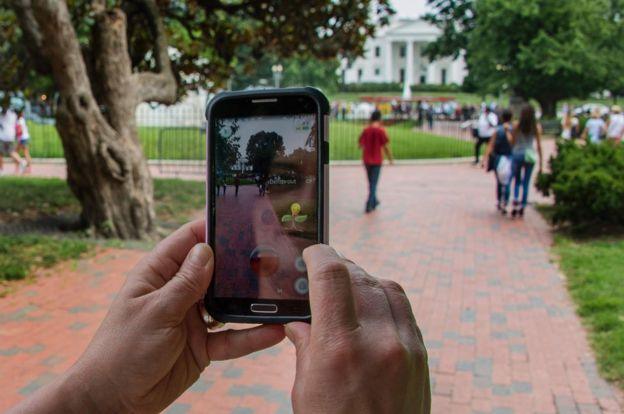
A Pokemon player searches the square in front of the White House
What happens next?
Niantic was, by its own admission, caught off-guard by the sheer popularity of Pokemon Go, but it has pledged to continue supporting the game with bi-weekly updates.
"Running a product like Pokemon Go at scale is challenging," the developer recently wrote on its blog, external.
For now, the game has yet to be released across many parts of Asia and Africa, which could improve its usage figures once the game arrives in those territories.
However, Mr Chapple believes that fewer people playing Pokemon Go in the West could diminish the game's social aspect, which in turn would make it a less attractive game for those who stick around.
"Pokemon Go is unique. At the moment it relies on people in your local area playing with you, not someone on the other side of the world. If the numbers continued to drop so dramatically, who will be left to play you in your small, local town?"
- Published15 August 2016
